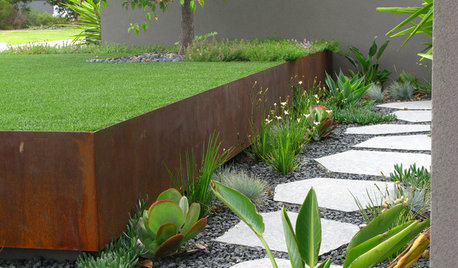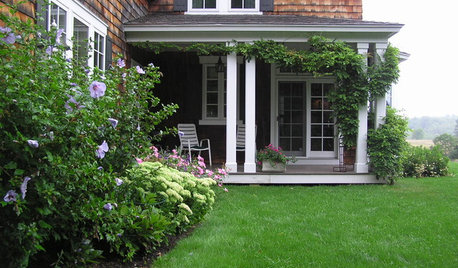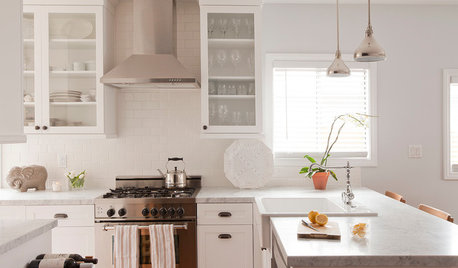Want to level my dirt (lawn) before laying sod
amg1978
13 years ago
Related Stories

GARDENING GUIDESHow to Plant a New Lawn From Sod
Take the quick-start route to turf with sod; these installation guidelines will help ensure a healthy and long-lasting lawn
Full Story
FRONT YARD IDEASBefore and After: Front Lawn to Prairie Garden
How they did it: Homeowners create a plan, stick to it and keep the neighbors (and wildlife) in mind
Full Story
LANDSCAPE DESIGN7 Questions to Ask Before Laying Stepping Stones
These broken-up pathways invite you to put a spring in your step — while adding functionality to the garden
Full Story
BEFORE AND AFTERSSee 6 Yards Transformed by Losing Their Lawns
Wondering whether a turf lawn is the best use of your outdoor space? These homeowners did, and they found creative alternatives
Full Story
GARDENING GUIDESHow to Plant a New Lawn From Seed
Choose from more grass varieties and save money over sod by starting your lawn from seed
Full Story
GARDENING AND LANDSCAPINGLay of the Landscape: Traditional Garden Style
If strong lines, manicured beds and a sense of graciousness speak to you, a traditional landscape may be on your horizon
Full Story
GARDENING GUIDESHow to Prep Your Ground for a Healthy New Lawn
Seed or sod that falls on weedy, lumpy soil is a wasted effort. Follow these steps to ensure that your new lawn will thrive
Full Story
GREAT HOME PROJECTSHow to Replace Your Lawn With a Garden
New project for a new year: Lose the turfgrass for energy savings, wildlife friendliness and lower maintenance
Full Story
SAVING WATERHouzz Call: Are You Letting Go of Your Lawn?
Many facing a drought are swapping turf for less thirsty plantings. If you’re one of them, we’d like to hear about it
Full Story
REMODELING GUIDES10 Things to Do Before the Renovation Begins
Prep and plan with this insight in hand to make your home remodeling project run more smoothly
Full StorySponsored
Columbus Area's Luxury Design Build Firm | 17x Best of Houzz Winner!
More Discussions






johnb352
dchall_san_antonio
Related Professionals
Tempe Landscape Architects & Landscape Designers · Chattanooga Landscape Architects & Landscape Designers · River Forest Landscape Architects & Landscape Designers · Signal Hill Landscape Architects & Landscape Designers · Bethlehem Landscape Contractors · Manchester Landscape Contractors · Stamford Landscape Contractors · Bridgeview Landscape Contractors · Brooklyn Park Landscape Contractors · Fort Mill Landscape Contractors · Marlborough Landscape Contractors · Pahrump Landscape Contractors · Wareham Landscape Contractors · Quartz Hill Landscape Contractors · Las Vegas Swimming Pool Buildersgoren